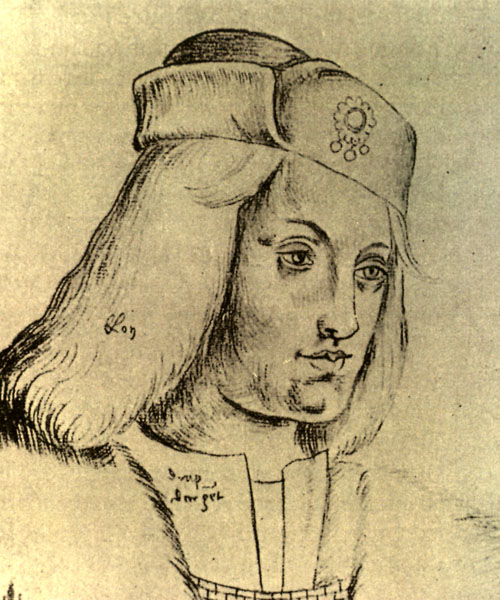Perkin Warbeck (c.1474–1499) was a pretender to the English throne during the reign of King Henry VII of England. By claiming to be Richard of Shrewsbury, Duke of York, the younger son of King Edward IV, Warbeck was a significant threat to the newly established Tudor Dynasty, and gained strong support outside England.
It is documented that Richard, Duke of York, was sent to the Tower of London, then a royal residence, by King Richard III in mid-1483. He was sent there with his older brother Edward, who was briefly King Edward V at age 13.
The ultimate fate of these two boys —the Princes in the Tower— has been the subject of much speculation and debate. Due to Tudor propaganda efforts, it was long believed that they were both murdered not long afterward on Richard III’s orders. Due to uncertainty as to whether Richard of Shrewsbury had died in the Tower of London, or had survived, Warbeck’s claim that he was the Duke of York gathered some followers, whether due to actual belief in his identity or because of the desire to overthrow Henry and reclaim the throne.
Warbeck’s story began when he travelled with a Breton merchant to Cork in 1492. Claiming to be Richard, Duke of York, Warbeck was officially recognized by the Mayor of Cork and his councilors (opponents of Henry VII) and legend has it that he was crowned in Christchurch as King Richard IV of England. As punishment the crown put a temporary forfeiture on the city’s charter and the famous description, ‘Rebel Cork,’ originally applied by the crown as a derogatory designation was adopted by the citizens as a badge of pride. The Mayor of Cork and several important citizens later went with Warbeck to England to fight against Henry VII but when the rebellion collapsed they were all captured and executed in London in 1499.
Warbeck himself was held prisoner in the Tower of London and read out a confession relinquishing his claim to throne before his execution.
